The passionflower is a climbing liana that produces stunningly beautiful and exotic flowers. However, it is also known to be an invasive plant. During its rapid growth, it spreads its stems in all directions. If not properly trained and pruned, the passionflower can sometimes become excessively large and difficult to control.
Pruning and training a passionflower are two very simple tasks that will help you enjoy a thriving, healthy plant adorned with many splendid flowers.
Pruning the passionflower
First and foremost, know that it is not necessary to prune a passionflower until the fourth year after planting.
After this period, passionflowers grown in the ground are preferably pruned in March, at the end of winter. Note that the most vigorous Passiflora plants can also be pruned a second time after flowering, i.e., in autumn. For very invasive plants, pruning during flowering, in the heart of summer, can be considered, but only if absolutely necessary.
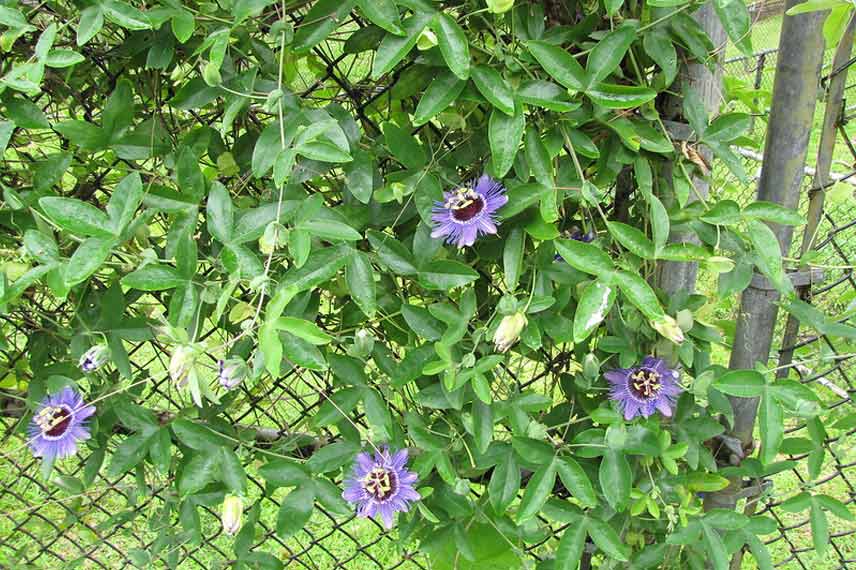
Passiflora caerulea ‘Purple Haze’, © Forest and Kim Starr - Flickr
As for potted plants, they are pruned in autumn, just before being moved to winter shelter. For the hardiest potted passionflower varieties that remain outdoors during winter, wrapped in winter protection, pruning only occurs in spring, as with plants in the ground. This avoids weakening them as they prepare to face the cold.
Note: Due to its rapid growth, the passionflower always flowers on the current year's shoots, so late winter pruning does not affect the year's flower production.
Required tools
- A clean and disinfected pruning shear
- A pair of gloves
Cleaning the passionflower
Before getting to the heart of the matter, start by cleaning your passionflower by removing dead stems. These are easily recognisable by their yellow or even black colour. All damaged or poorly placed stems should also be cut back to ground level.
Solenne’s tip: For passionflowers planted outdoors, it may happen that the entire plant freezes, but the roots survive the cold. In this case, cut back all the parts scorched by frost and wait to see if the plant regrows from the base in spring.
Reducing the foliage
To encourage flowering, focus your efforts on the secondary, non-ramified stems that appeared the previous year. Use your pruning shears to cut them back to 20 cm from the base.
You can also remove the most fragile stems to aerate the plant, without ever touching the main structural stems, i.e., the thickest ones (approximately the thickness of a finger).
Pruning a potted passionflower
Pruning a potted passionflower involves reducing the length of its stems by half and completely removing one-third of the stems to aerate its habit.
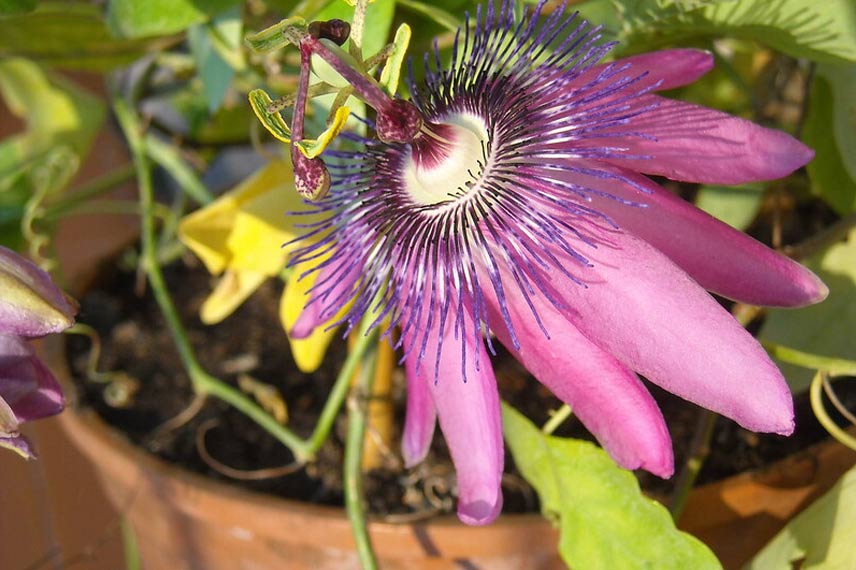
Passiflora 'Purple Passion' in a pot, © Claudy-o Cdy-o - Flickr
Cutting back a passionflower
Every four years, cut back your passionflower to regenerate its stump and renew its structural stems.
Cutting back a passionflower involves reducing one in three structural stems to 50 cm from the ground.
Training a passionflower
The passionflower is a vigorous climbing plant that can easily colonise its space and must therefore be controlled and guided with a suitable support. To do this, the passionflower should be trained from planting. The task is not difficult, thanks to the plant's tendrils, which can naturally wrap around many supports, provided they are sufficiently sturdy.
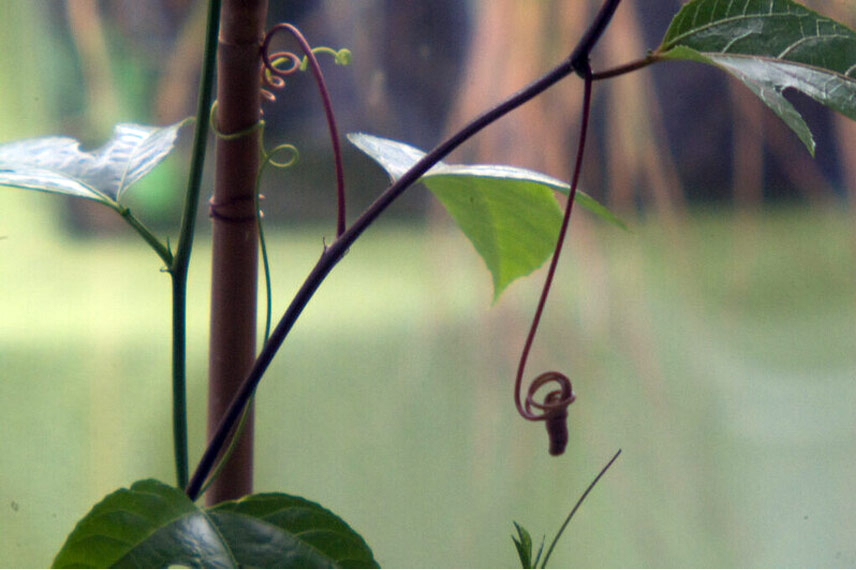
Passionflower tendrils, © Bernd Hutschenreuther – Flickr
It is thus possible to train a passionflower on wooden trellises, a pergola, or even a wire mesh. Avoid simple metal wires, as passionflower tendrils struggle to attach to them. Supports with intersecting elements are more suitable.
Note: Always choose a large support to accommodate the passionflower's rapid growth, which can easily cover more than 8 m2.
Required tools
- A pergola, trellis, or sturdy wire mesh
- Ties
Training the passionflower
Simply guide the branches of your young plants onto the chosen passionflower trellis. Train the stems in a fan shape to form the future structural stems.
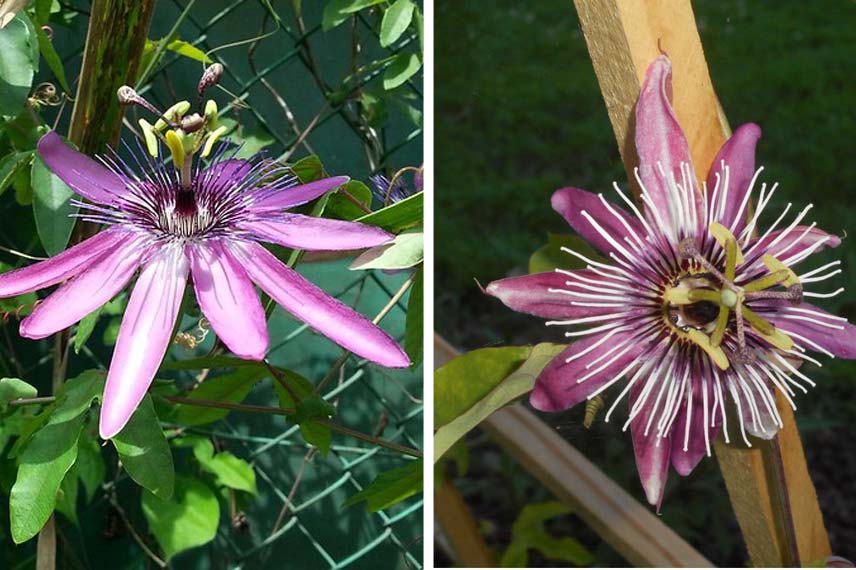
Passiflora Violacea, © Jnzl's Photos|Passiflora Victoria, © Tony Alter - Flickr
Why is pruning and training a passionflower essential?
In the wild, passionflowers are climbing lianas that do not need pruning to flower or fruit. However, these two tasks are essential when cultivating them in a garden or pot.
Indeed, the passionflower is a very vigorous plant, known for its ability to quickly colonise its environment to the point of becoming invasive. In their natural habitat, some species can even reach heights of 40 m. Although their growth is far less impressive in our climates, passionflowers still have an expansive nature. Pruning and training therefore help moderate their rapid development. Even when grown in pots, the foliage must be controlled to ensure the aerial parts match the pot's volume and, consequently, the root system.
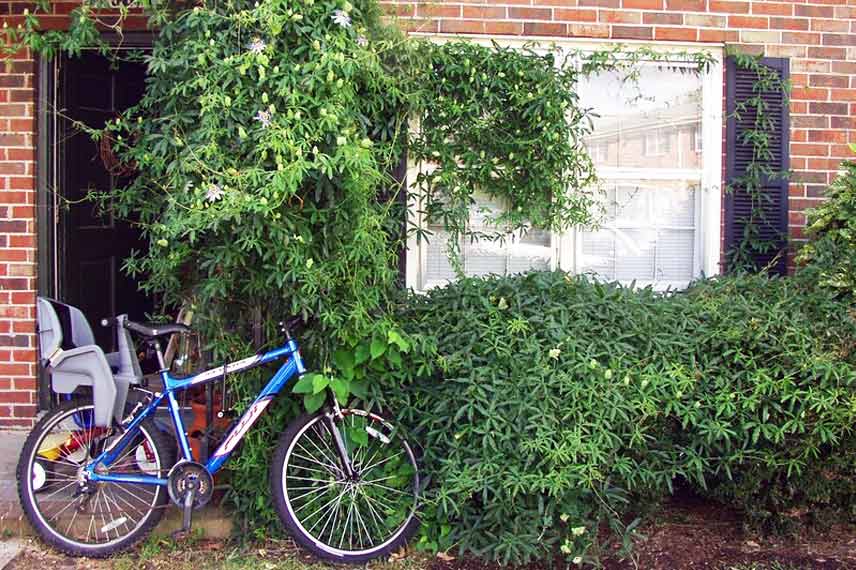
Passionflower, © Maggie McCain - Flickr
Pruning a passionflower also has the great advantage of encouraging flower production at the expense of foliage. Indeed, the more the passionflower draws on its reserves to develop leaves and extend its stems, the fewer flowers it produces. By pruning old stems, you promote the growth of new floriferous shoots.


































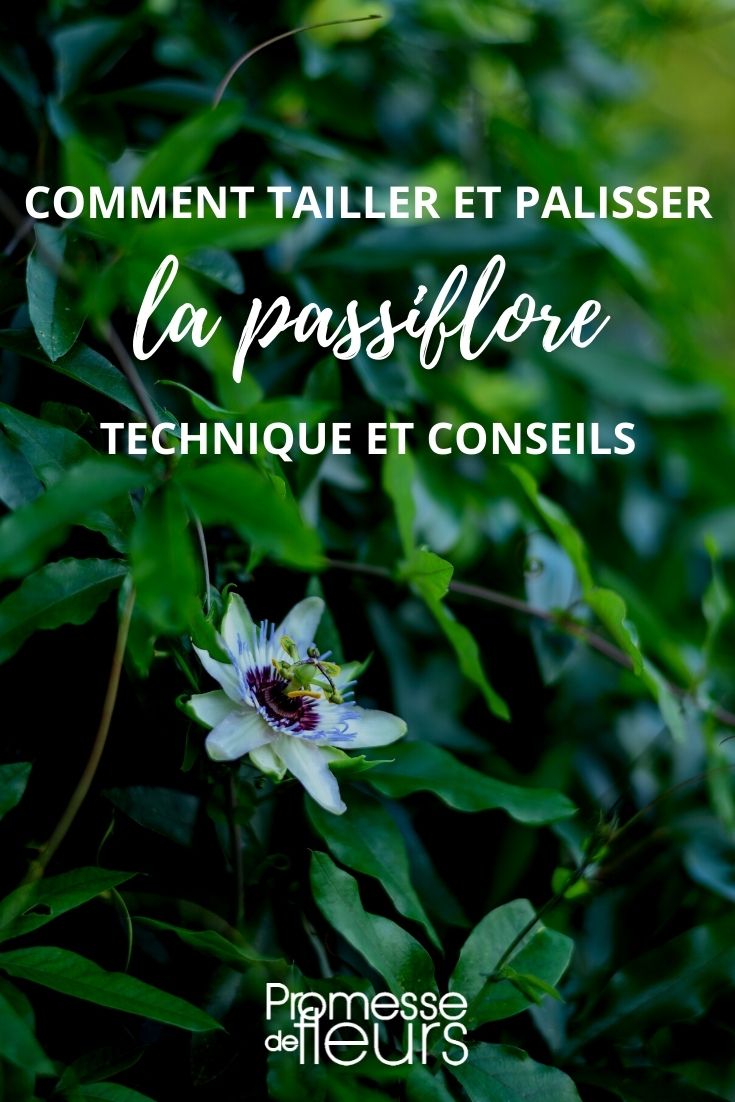
Comments